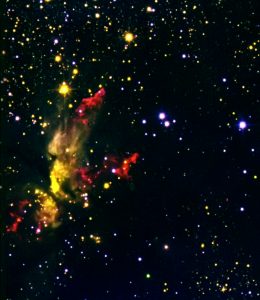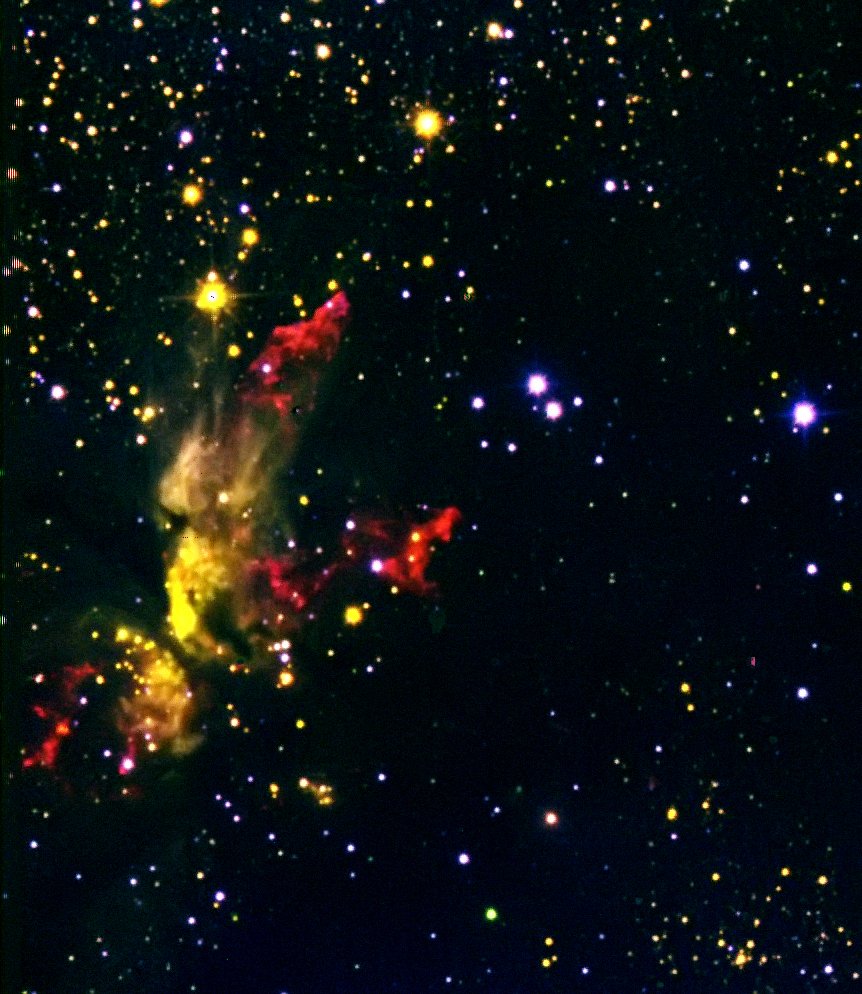These outflows interact with the surrounding molecular material via shocks and transfer energy and momentum into the parental cloud. The brightness and length of the outflows give indications of the evolutionary stage of the driving young star, as well as about the conditions of the environment. We have analysed near infrared narrow band molecular hydrogen emission line images taken with the UK Infrared Telescope. The survey covers about 150 square degrees along the Galactic Plane. We have determined how the statistics of molecular hydrogen outflows from young stars depends on the environment (high vs. low mass star formation; clustered vs. isolated star formation), as well as generating a complete, unbiased inventory of molecular hydrogen emission line objects over a large fraction of the Galaxy.

Colour image of the outflows from the massive young star forming region G35.2N in the near infrared filters J (blue), K (green) and H2 (red). J and K data are taken from UKIDSS GPS, the H2 data is from the UWISH2 survey.
For more information go to UWISH2 Survey website as well as Molecular Hydrogen Emission Line Object Catalogue
